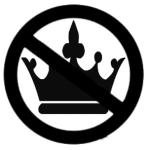
One of the things I do in my new book, Breaking Bad Faith (available on Amazon on July 4, 2023) is expose many of the toxic faith or “bad faith” narratives that have come out of conservative Christianity and are in popular theology. These narratives are not based on a good historical study of the first century Jesus movement, a fulsome examination of the Koine Greek language of the New Testament, or the historical/cultural Jewish/Roman context from which second Temple Judaism, Jesus, and the early movement arose. These narratives are largely toxic myths. Below is an excerpt from the first chapter. It lists the major beliefs and practices mostly from evangelicalism or fundamentalism that I would define as “bad faith.” Later, I go deeper into why they are myths and how many if not most of these stem from or are related to a retributive or violent theology. In the second half of the book, I help readers rebuild a “path of peace” based on restorative narratives from parts of the Torah, the prophets, and Jesus’ teachings that derive from a good study of history. Enjoy!
__________
Toxic Faith or “Bad Faith” is all around us
From my new book, Breaking Bad Faith: Exposing Myth and Violence in Popular Theology to Recover the Path of Peace:
__________
Bad faith [toxic faith] is all around us. It is present when people embrace a non-historically informed religious belief system. It arises when there are beliefs and practices that are legalistic, spiritually abusive, and manipulative. You can find it when people divide the world into “us vs. them,” and look down on unbelievers as hopelessly lost unless they convert to the religious (or political) faith of “us.”
Bad faith is present when people insist the Bible is inerrant (without error) and infallible (incapable of being wrong) in everything it teaches and is the supreme authority in all matters of faith and conduct and who think all who don’t believe this are backslidden or heretics. It appears when people read the Bible without concerns for an accurate translation of the original language or literary, historical, and cultural context. It’s present when people believe one must be a committed member of a “Bible-believing” church to be right with God and that God uses modern “church” as an authoritative covering to keep people on the right path. Moreover, it’s present when people think women can’t be pastors or leaders in the church.
Bad faith is present when people believe that all of humanity is born in total depravity due to “original sin,” and without some form of “born again Christian” experience, every person is a hopeless sinner destined to an afterlife of eternal punishment upon death.
You can find it when people think those who identify as LGBTQ can’t be true Christians and are lost unless they repent, practice abstinence, or become heterosexual. It is present when men use Bible verses to justify domestic violence or when churches teach divorce (and remarriage) is a sin even in cases of physical and emotional abuse. Or when people think corporal punishment of children is God’s will and commanded in the Bible and think parents who don’t spank their children are being disobedient. Or when people believe “church discipline” merits shunning people who don’t toe the doctrinal line or consider others heretics because they believe in things like universalism or gender equality.
__________
How retribution is part of these toxic faith beliefs
__________
Bad faith is present when people believe in a retributive god who advocates for largely punitive “tough-on-crime” policies to bring order to society and who commands capital punishment for high crimes. It is lurking when people believe this retributive god endorses and even encourages that believers pack a concealed weapon to be ready to prevent crime and take down a bad guy with a gun; or when people believe God supports violent retaliation in general and is okay with most if not all of America’s wars. It arises when people believe this retributive god supposedly sent Jesus to earth to suffer a torturous, violent punishment as a substitute for what humanity deserves to appease God’s wrath over sin. Or when they believe Jesus will return to earth in final judgment to reward believers and punish unbelievers in an apocalyptic tribulation before the world ends. Or when people believe that the majority of the human race will be separated from God for eternity because they haven’t accepted Christ as their personal Lord and Savior or aren’t sufficiently dedicated to some sectarian “biblical” theology or haven’t sufficiently obeyed.
This brand of faith teaches that God is transactional, duplicitous, and demands sacrifice—time, talents, careers, prayers, fasting, tithes, money, church commitment, life dedication, obedience, rejection of one’s own sense of reason, imprisonment or execution of criminals, and the torture and murder of an innocent victim (Jesus of Nazareth around 30 CE) before this god will bless and forgive humanity and bring true justice to the world. As you shall discover in these pages, this god ultimately advocates and promotes retribution and violence and requires his worshippers to do the same. This brand of “faith” needs to be exposed and broken as it harms both its adherents and its victims. Exposing this “bad faith” with historical, logical, and biblical facts is the first goal of this book.
Incidentally, this doesn’t mean anyone who has any of the aforementioned beliefs—what I call bad faith—are all bad people. No, as we will see, many of us are just victims of misinformation and someone else’s misconstrued study of history. Others of us should know better. But many of us are programmed to believe certain ways or are just mimicking what we hear in our faith communities without thinking too hard about it. This book will force you to think. Not thinking through what you believe is a huge problem.
____________
The false lens that creates “bad faith”
____________
The second goal of this book is to reveal what matters most about what people call “Christianity.” What matters most boils down to the radical non-violent love ethic of Christ, i.e., the path of peace. The big problem with just diving into this topic is that most people’s view of “Christianity” is so fraudulent and distorted, it clouds any core message. One cannot possibly address things like Jesus’ egalitarianism, his command to love our enemies, his modeling the forgiving victim, and his call for peacemaking until (s)he is clear-eyed on the history of what we call Christianity. Without exposing a collection of various Christian frauds and myths that our society buys into, one can never really see what matters most, let alone have a guide to breaking bad faith.
We need to shed this false lens from which most people view Jesus and his early followers. You see, “Christianity,” the way most people think of it, has almost nothing—or at best, very little—to do with the historical Jesus epic that began in the first century. “Christianity,” and particularly Western Christianity and its variety of popular modern streams of evangelicalism and fundamentalism, is full of mythical, fraudulent, and violent theologies that cloud one’s mind so much that it’s almost impossible to see the beauty of the magnanimous message that Jesus still brings the world. French theologian, Jacques Ellul, called this “the subversion of Christianity,” arguing that there was not just deviation from the core message but “radical and essential contradiction, or real subversion.” [Ellul, The Subversion of Christianity, 3] Russian author of War and Peace and theologian, Leo Tolstoy, said both believers and unbelievers typically are wearing this false lens, being “fully persuaded that they have understood Christ’s teachings a long time, and that they understand it so fully, indubitably, and conclusively, that it can have no other significance, than the one they attribute to it. And the reason for this conviction is that the false interpretation and consequent misapprehension of the Gospel is an error of such long standing.” [Tolstoy, The Kingdom of God is Within You, 32]
In short, we must expose long standing “bad faith” in our theology before we can ever see good faith. Then we’ll be ready to break the bad faith habit. Many people have called this process “deconstructing” one’s theology before you reconstruct it. That is, cutting out the falsehoods and zeroing in on historical facts and truth. This bad faith that needs deconstructing is everywhere, but particularly in popular Christianity, that is, its conservative, fundamentalist, and evangelical streams—in both Protestantism and Catholicism. But it can also just as easily seep into progressive and liberal Christianity.
__________
Stay tuned for more posts that will also include excerpts from the book. The next one will be on “Why Some People Believe in a Retributive, Two-Faced God.”
__________
Michael Camp tends the Spiritual Brewpub, which helps disillusioned or post-evangelicals uncover historical facts and insights that help them deconstruct, rethink, and rebuild a more authentic faith or philosophy of life. He is the author of Breaking Bad Faith: Exposing Myth and Violence in Popular Theology to Recover the Path of Peace, which releases on July 4, 2023 (Quoir). To get updates and read other themes in the book, subscribe to this blog. To get specific help deconstructing conservative Christianity and rebuilding healthy faith, see Michael’s Religious Deconstruction Workshop and listen to the Spiritual Brewpub Podcast.













